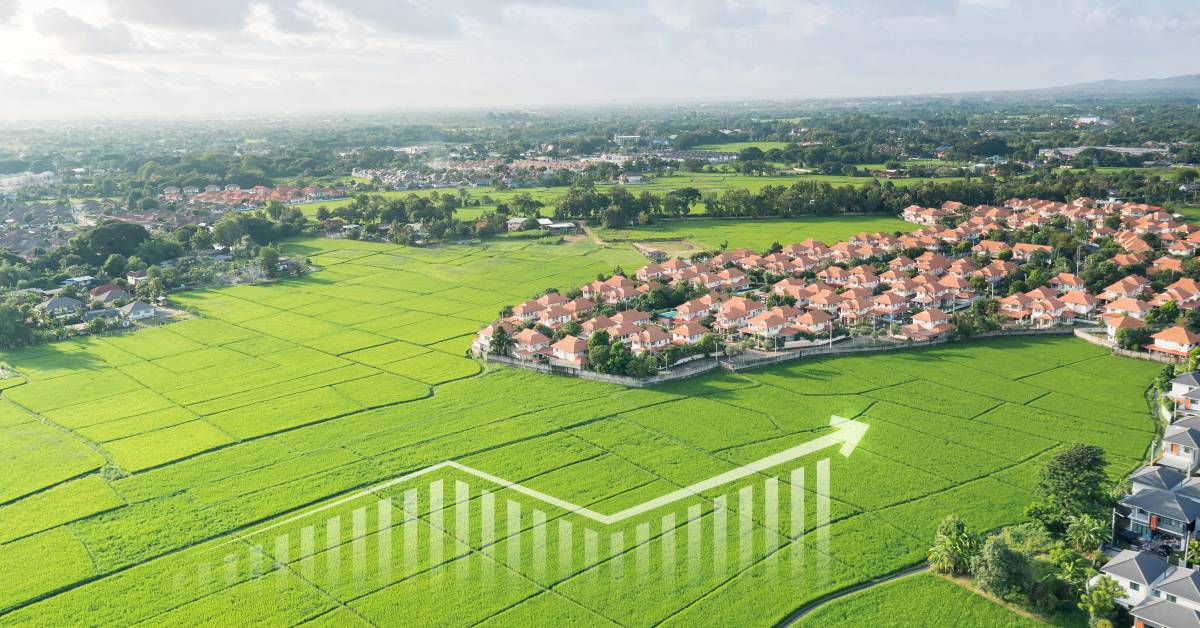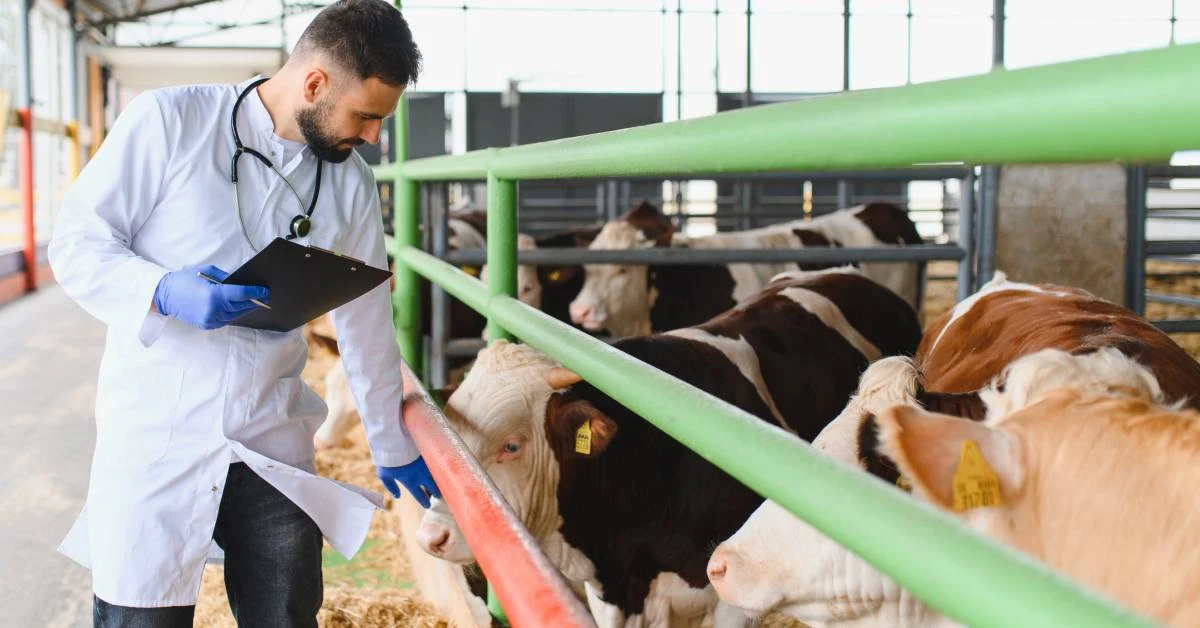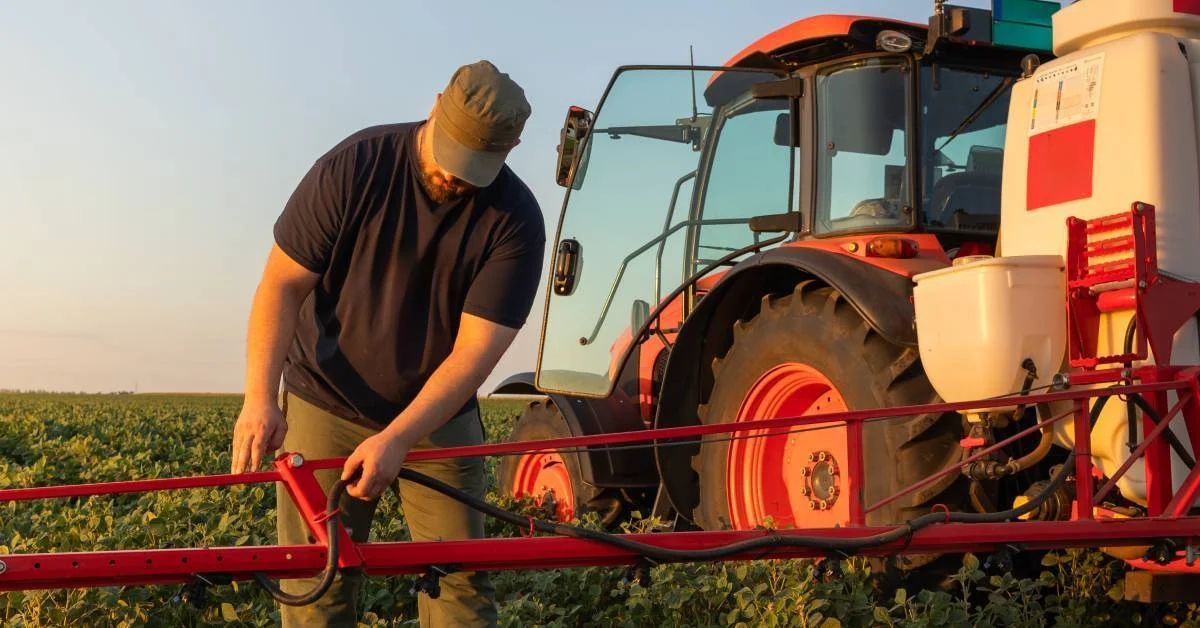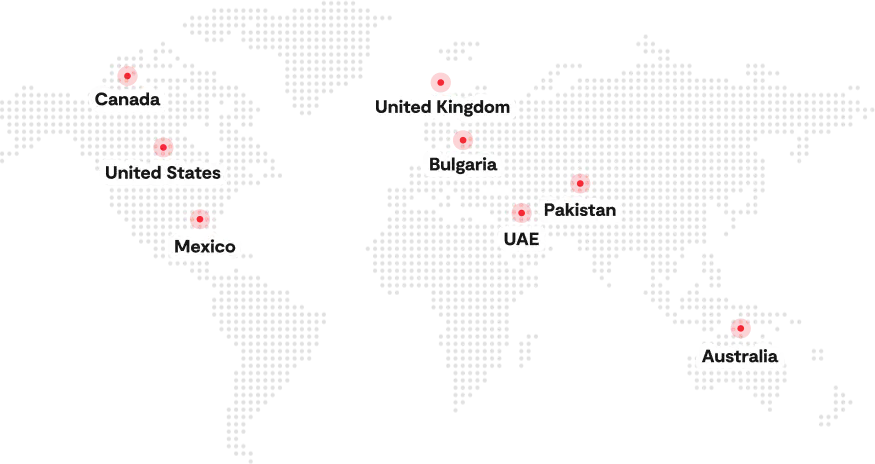Accurately predicting crop yields has long been a challenge for the agriculture sector, one that carries high financial stakes and growing complexity. As climate change intensifies, unpredictable weather patterns, soil degradation, and shifting pest behaviors are making traditional forecasting methods increasingly unreliable.
Many farm managers still rely on outdated models, which can result in 20–30% prediction errors, leading to significant resource misallocations and missed revenue opportunities. In this environment, artificial intelligence (AI) is emerging as a transformative force.
Unlike conventional methods, AI-powered forecasting tools can integrate vast, diverse datasets ranging from satellite imagery and historical yields to real-time weather conditions, delivering much higher accuracy. For example, some advanced models have achieved an R² value of 0.92, meaning they can explain up to 92% of yield variability under certain conditions, which is a significant leap forward in predictive performance.
For agribusiness professionals, consultants, and farm operators, leveraging AI for crop yield prediction is no longer a futuristic concept but a strategic necessity. This guide explores the practical applications of AI in crop yield prediction, from data integration and model selection to implementation strategies that deliver measurable results.
This guide explores the practical applications of AI in crop yield prediction, from data integration and model selection to implementation strategies that deliver measurable results.
What is Crop Yield Prediction?
Crop yield prediction is the process of estimating how much a farm will produce before harvest. These forecasts help farmers and agribusinesses make smarter decisions about when to plant, how much to invest in inputs like seeds and fertilizers, how to manage labor, and how to plan for sales.
To generate accurate predictions, the system for crop management pulls together variety of data, such as past yield records, current weather conditions, soil health, and crop management practices. The better the data, the more reliable the forecast.
Traditional methods often rely on historical averages and simple statistics. But these can fall short when faced with the complex mix of climate shifts, soil variability, and changing farm practices.
Today, crop yield prediction is about more than just numbers. It’s about uncovering the why behind the yield. With modern tools, farmers can not only predict outcomes but also understand what’s driving them, leading to more informed decisions and better results.
Traditional Methods of Crop Yield Forecasting
Older yield forecasting techniques laid the groundwork for today’s advanced systems, but they have clear limitations in today’s dynamic farming environment. Here’s how they typically work:
- Historical Data Analysis: Looks at past yield records to spot trends, assuming that future conditions will mirror the past. While helpful for spotting general patterns, it doesn’t adjust well to shifting climate or soil conditions.
- Weather-Based Models: Use rainfall, temperature, and seasonal averages to predict yields. These models work best in stable environments but often ignore microclimates or sudden weather changes that directly impact yield quality.
- Field Scouting Reports: Observations from on-ground agronomists or farm staff assessing crop health manually. While valuable, this method is labor-intensive, limited in scope, and subject to human interpretation.
- Basic Statistical Tools: Relies on simple linear regressions to link environmental factors with yield. These tools don’t capture the complex, real-world interactions between crop genetics, disease outbreaks, and evolving management practices.
The Role of AI in Crop Yield Prediction
AI doesn’t just forecast yields, but it uncovers hidden patterns across weather, soil, genetics, and management practices. With smart models, you get proactive insights you can act on, not just data you stare at.
How AI Transforms Crop Yield Forecasting?
Artificial intelligence (AI) is reshaping how farmers and agribusinesses forecast crop yields. Unlike traditional methods that rely on averages and historical trends, AI can analyze large volumes of data from different sources such as weather forecasts, satellite images, and soil reports to make more accurate and timely predictions.
What makes AI especially powerful is its ability to spot hidden patterns in complex data. It doesn’t just tell you what might happen. It can help explain why it’s likely to happen, allowing farmers to adjust their strategies accordingly.
Some of the most advanced AI models use deep learning techniques, including recurrent neural networks (RNNs) and long short-term memory (LSTM) networks. These models are designed to learn from time-series data, making them ideal for tracking how changing conditions over time affect crop performance. Hybrid networks like RNN-LSTM have outperformed traditional prediction tools by delivering significantly higher accuracy.
Machine learning algorithms can analyze relationships between dozens of variables simultaneously, including weather patterns, soil conditions, crop genetics, and management practices. This multi-dimensional analysis capability enables AI systems to identify subtle patterns that traditional methods miss, leading to more accurate predictions. Since these models depend on high-quality training datasets, data annotation plays a key role in labeling satellite imagery and environmental data so that AI can recognize features like crop types, soil textures, and early signs of stress.
Deep learning models have been employed to analyze complex relationships between climatic factors and crop growth, achieving higher accuracy compared to traditional statistical methods. The dynamic nature of AI models enables them to update predictions in real-time, providing farmers with current forecasts that accurately reflect changing conditions.
Data Sources for AI-Powered Crop Yield Prediction
AI-powered crop yield prediction systems integrate multiple data sources to create comprehensive models that capture the complexity of agricultural systems. Previous crop yield estimation studies developed using Sentinel-2 data and AI techniques have increased significantly in the last 5 years (2019–2024). These studies calculate various VIs (such as NDVI, EVI, and NDRE) that monitor plant health and development processes.
Satellite Imagery & Vegetation Indices
Satellite imagery offers real-time insights into crop health and development through the use of vegetation indices. The Normalized Difference Vegetation Index (NDVI) serves as a primary indicator of plant vigor and biomass, while other indices, such as the Enhanced Vegetation Index (EVI) and Normalized Difference Red Edge (NDRE), provide additional perspectives on crop condition.
Weather and Climate Data
Weather forecasts and climate data form another crucial component of AI prediction models. Historical weather patterns, current conditions, and extended forecasts enable models to understand how environmental factors impact crop development. This includes temperature variations, precipitation patterns, humidity levels, and wind conditions that affect plant growth and stress responses.
Soil Moisture & Nutrient Sensors
Soil moisture and nutrient level data provide insights into the growing environment’s capacity to support crop development. IoT sensors and satellite-based soil moisture monitoring systems generate continuous data streams that AI models use to assess water availability and nutrient status throughout the growing season.
Historical Crop Performance
Historical crop performance data serves as the foundation for training AI models. This includes yield records, planting dates, variety information, and management practices that help models understand the relationship between inputs and outcomes across different conditions and locations.
Benefits of Using AI for Crop Yield Prediction
AI brings more than just forecasting accuracy. It turns raw data into strategic insights. By predicting yields earlier and more precisely, AI enables farmers to optimize input use, minimize risks, and enhance profitability, all while adapting to changing conditions in real-time.
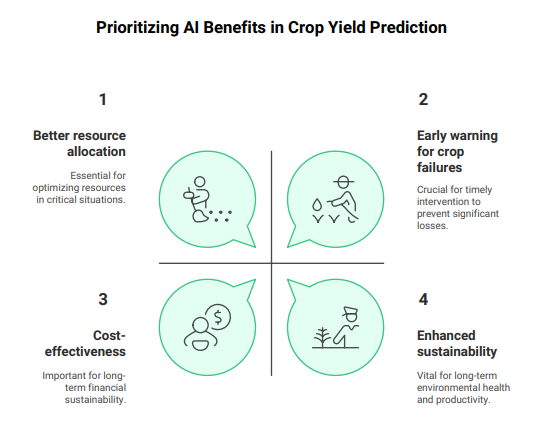
1. Increased Accuracy and Precision
AI’s ability to analyze vast datasets and identify complex patterns significantly improves the accuracy of crop yield forecasts. Machine learning algorithms, such as regression and neural networks, demonstrate high accuracy. They predict yields based on factors like weather, soil moisture, and vegetation indices. This enhanced accuracy enables better decision-making throughout the growing season.
Traditional forecasting methods typically achieve accuracy rates of 60-70%, while AI-powered systems consistently deliver accuracy rates of 85-95%, depending on the crop and data quality. This improvement in precision translates to more reliable planning and reduced uncertainty in agricultural operations.
Real-time prediction capabilities allow farmers to adjust their strategies based on current conditions rather than relying on static forecasts. AI models can incorporate new data as it becomes available, continuously refining their predictions and providing updated insights that reflect changing circumstances.
2. Early Warning for Crop Failures or Droughts
AI models excel at identifying early warning signs of potential crop failures, pest outbreaks, or adverse weather conditions. By analyzing patterns in satellite imagery, weather data, and historical records, these systems can alert farmers to developing problems before they become visible in the field.
Early detection of drought stress through satellite monitoring and soil moisture sensors enables proactive crop irrigation management, allowing for more efficient use of water resources. AI systems can predict when crops will experience water stress based on weather forecasts and soil conditions, allowing farmers to implement mitigation strategies before yields are affected.
The ability to predict pest and disease outbreaks based on environmental conditions and crop development stages helps farmers implement preventive measures. This proactive approach reduces the need for reactive treatments and minimizes crop losses.
3. Better Resource Allocation
Accurate crop yield predictions enable more efficient resource allocation across farming operations. Farmers can adjust fertilizer applications, irrigation schedules, and labor allocation based on predicted yields, reducing waste and improving efficiency.
Variable rate application of inputs becomes more precise when guided by AI-powered yield predictions. Fields or zones with higher yield potential can receive optimal inputs, while areas with lower potential can be managed more conservatively, reducing costs and environmental impact.
Labor scheduling benefits from accurate yield forecasts, allowing farmers to plan harvest operations and seasonal workforce needs more effectively. This improved planning reduces labor costs and ensures adequate resources are available during critical periods.
4. Cost-Effectiveness
Long-term cost savings result from more efficient planning and reduced reliance on guesswork or overly manual methods. AI-powered yield prediction helps farmers avoid over-investing in areas that may not yield as expected, directing resources toward the most productive opportunities.
The return on investment for AI-based crop yield prediction systems typically occurs within 2 to 3 growing seasons. Initial implementation costs are offset by improved decision-making, reduced input waste, and optimized resource allocation.
Risk management improves when farmers can predict potential yield variations and plan accordingly. This includes crop insurance decisions, forward contracting strategies, and financial planning that takes into account expected production levels.
5. Enhanced Sustainability and Reduced Environmental Impact
AI-powered systems help optimize input applications based on predicted crop needs, leading to more sustainable farming practices. By applying fertilizers and pesticides only when and where necessary, farmers can reduce their environmental impact while maintaining productivity.
Water use efficiency improves through precision irrigation guided by AI predictions. Systems can predict when crops will need water and apply the optimal amount at the right time, reducing waste and minimizing environmental stress.
Carbon footprint reduction occurs through more efficient use of machinery, fertilizers, and other inputs. AI-guided precision agriculture practices reduce unnecessary field operations and input applications, contributing to more sustainable farming systems.
How Folio3 AgTech Crop Management Software Helps You Predict Yields Smarter with AI-Driven Tools?
Folio3 AgTech crop management software goes beyond basic field monitoring by integrating advanced AI capabilities to help you predict, plan, and optimize your yields. From data-driven forecasting to seamless task management, it provides a complete platform to manage modern farm operations with confidence.
1. AI-Powered Yield Forecasting with Real-Time Insights
Folio3 AgTech crop management software uses machine learning algorithms trained on multi-source agricultural data, including satellite imagery, historical yield records, weather trends, and soil sensor readings. As the system collects more data, it continuously improves its accuracy, delivering highly tailored yield predictions for every field.
- What you gain: Forecast outcomes with higher confidence and adjust plans before risks escalate.
- Why it matters: Accurate yield insights help reduce input waste, fine-tune labor schedules, and align harvest plans with market demand.
2. Integrated Crop Monitoring and Geospatial Analysis
The software features powerful tools, including geospatial mapping and crop health analytics, which enable farm managers to visually assess soil conditions, irrigation patterns, and nutrient deficiencies across multiple fields.
- What you gain: Detect early-stage crop stress and take corrective actions.
- Why it matters: Preventing minor issues from becoming major losses is key to maximizing yield.
3. Crop Planning & GDU-Based Scheduling
AI-driven crop planning allows you to schedule seeding, fertilization, and harvesting based on Growing Degree Units (GDU) and predictive environmental data.
- What you gain: Time your planting and harvesting windows for optimal crop performance.
- Why it matters: Matching crop cycles to climate conditions increases both yield and quality.
4. Task Automation and Labor Efficiency
Set automated task scheduling, reminders, and role-based assignments to streamline field operations and enhance efficiency. Monitor task completion, labor hours, and ongoing activity from a single interface.
- What you gain: Keep everyone on track without micromanaging.
- Why it matters: Efficient labor use translates to reduced overhead and better farm performance.
5, End-to-End Inventory and Financial Tracking
Track harvested crop inventory in real time, plan storage and distribution, and monitor the crop business profitability of each crop cycle through built-in financial dashboards.
- What you gain: Keep waste in check and optimize your supply chain.
- Why it matters: Better financial visibility helps you invest where it counts.
6. Built-in Compliance and Reporting Tools
Stay audit-ready with automated compliance reporting for pesticide use, water application, and traceability. Align operations with local agricultural regulations without the paperwork burden.
- What you gain: Meet federal/state-level requirements like nutrient application limits and NPDES rules.
- Why it matters: Avoid costly violations and showcase your commitment to responsible farming.
Conclusion
Farming has always involved a bit of guesswork, but with AI-driven yield prediction, you don’t have to rely on intuition alone. Growers using these tools are already experiencing improved accuracy in forecasts, more efficient resource utilization, and fewer surprises during harvest.
It’s not about replacing the farmer’s experience, but improving it with smarter, real-time insights. When combined with greenhouse management software, AI for agriculture becomes even more powerful—enabling precise environmental control, crop monitoring, and data-driven decisions in controlled growing environments.
As more farms adopt AI, those who do so early are likely to stay ahead in a rapidly evolving industry. So, if you’re looking to make more informed decisions and get more out of every acre, AI could be the edge you’ve been missing.
FAQs
What Is Crop Yield Prediction, and How Does AI Improve It?
Crop yield prediction estimates agricultural output before harvest using data analysis. AI improves accuracy by analyzing multiple variables simultaneously, achieving 85-95% accuracy compared to 60-70% for traditional methods.
How Does Folio3 AgTech Crop Management Software Use AI For Yield Prediction?
Folio3 AgTech crop management software integrates satellite imagery, weather data, soil sensors, and historical records through machine learning algorithms that continuously learn from farm-specific data, improving prediction accuracy over time.
What Data Does AI Use To Predict Crop Yield?
AI systems analyze satellite imagery (NDVI, EVI, NDRE), weather forecasts, soil moisture and nutrient levels, historical crop performance data, and real-time field conditions to generate accurate yield predictions.
How Accurate Is AI-Powered Crop Yield Prediction?
Modern AI systems achieve 85-95% accuracy in crop yield prediction, with the best-performing models explaining 92% of yield variation. This represents a significant improvement over traditional methods’ 60-70% accuracy rates.
How Can AI-Based Crop Yield Forecasting Reduce Costs?
AI reduces costs through better resource allocation, optimized input applications, improved labor scheduling, and reduced waste. Most systems provide ROI within 2-3 growing seasons through enhanced decision-making and operational efficiency.

